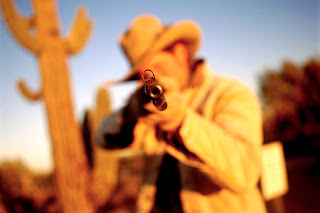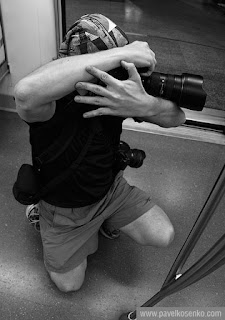 During my last trip to Japan I had to shoot a lot with low light and without a tripod so after that I decided to put down a few notes on how to shoot photos with handheld camera and at slow shutter speed.
During my last trip to Japan I had to shoot a lot with low light and without a tripod so after that I decided to put down a few notes on how to shoot photos with handheld camera and at slow shutter speed.Here are a few tips for better handheld shooting. Following these techniques will help you take sharp photos in shutter speeds as low as 1/10s or slower with a normal lens. To achieve that use the classic army approach to sharpshooting. Good shooting is a HABIT - proper Holding, correct point of Aim, controlled Breathing, Instinctive body position, and gentle Trigger control.
H - Holding. Holding your camera must be firm enough to support it in the most comfortable position, but must not be so tight that you are straining your muscles. When you strain your muscles, they start to shake. The result is that your camera will shake and this makes aiming more and more difficult.
A - Aiming. Take a moment to properly aim your shot. This particular rifle-shooting tip does not really apply to the camera shooting as with aiming a rifle you have many factors to consider, such as distance, wind etc. But anyway having time for proper shot planning helps reducing shake.
B - Breathing control. As you breathe, the sight will naturally move up and down the target with your body. The trick is to take a couple of good breaths to relax and to steady your heartbeat. When you are ready to pull the trigger, take a deep breath, exhale half way and then hold the breath. Now you can gently squeeze the trigger. Be careful that you don't hold your breath for too long, or your vision will start to blur and you'll have to start all over again.
I - Instinctive positioning. Instinctive body positioning is just getting comfortable. The more comfortable you are, the less muscle pressure you have to use. Your body should be in a natural position, a good way to check this is to close your eyes for a moment, relax, and then see if you are still aiming at the same point after you open your eyes again. Use your surroundings to steady your body. Leaning against a solid object is as useful as using a monopod. You can lean against a tree, a wall, a lamp post or anything else you can use while shooting your photo. Use your surroundings to steady your camera. You can lean your camera on the top of a fence or a car or a rock or pretty much anything that is around you.
T - Trigger control. This is very important skill and is one of the hardest skills to master. When the trigger is pulled properly, the camera will not move. Shot should come as a surprise to you, apply steady pressure on the trigger until the action fires, after the shot has been fired, hold the trigger down and "follow through" on the target, holding steady aim, this avoids the body's natural tendency, to "jerk" in anticipation of the recoil. So hold the camera still after shooting.
And here are a few non-rifle tips:
Use stabilised lenses (VR, IS or OS) if possible. These allow you to shoot handheld at slower shutter speeds while compensating for any camera movement that may be induced. Combine a stabilised lens with a good handholding technique and camera shake should be virtually eliminated.
Adjust the shutter speed/aperture combination for low light shooting. Try to open up the aperture to allow shooting at a higher shutter speed. You can also change the ISO value on the camera. If you normally shoot photos at ISO 100 or ISO 200 and the camera indicates this photo will be shot at 1/15sec then increasing to ISO 800 will allow you to shoot at 1/125 or 1/60sec respectively. And of course the higher the shutter speed the less camera movement is visible in the image. This tip is a well-known tip but many people afraid shooting at high ISO (like ISO 800 or ISO 1600) or open aperture too much. Modern DSLRs have less noise at the same ISOs as film has. Fujicolor 400 NPH was standard de-facto for wedding photographers for years. Modern DSLRs have less noise at ISO 400 than NPH has. So don’t be afraid shooting at high ISOs. Noise is nothing – picture is everything!
Set your camera to continuous high-speed shooting and take a series of shots. Pressing the shutter moves the camera, but keeping it held down for a couple of seconds keeps the camera steady.
Learn how to hold your camera properly. You can use Joe McNally "Da Grip" technique.
Or as alternative you can use similar camera grip technique shown on the following photo by travel photographer Dima Chatrov.

Photo by Pavel Kosenko
And the last very important tip:
Practice! Nothing is more important than shooting more and more. Practice makes perfect.
Also you are welcome to check my little Gallery of Japan Images from my last trip.
No comments:
Post a Comment